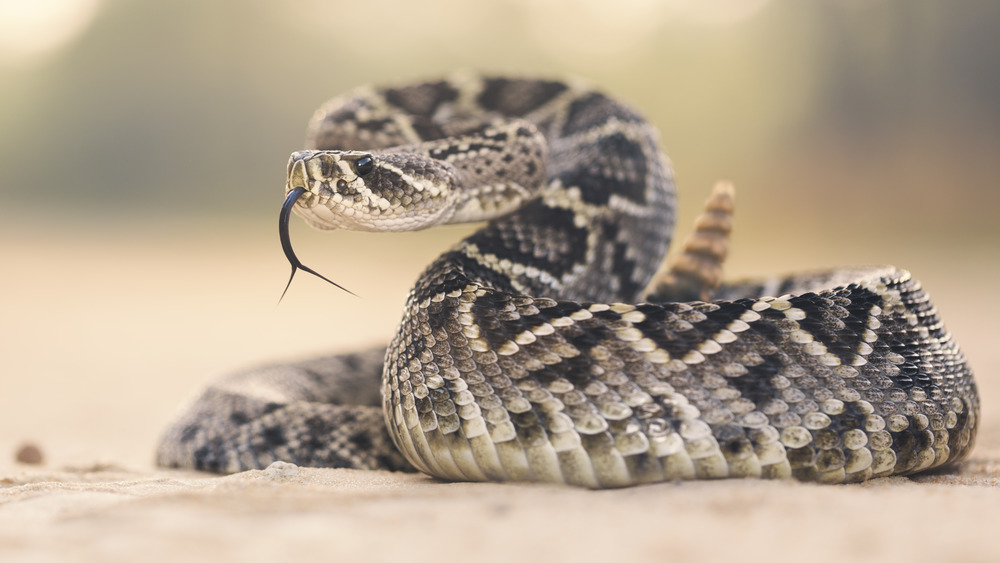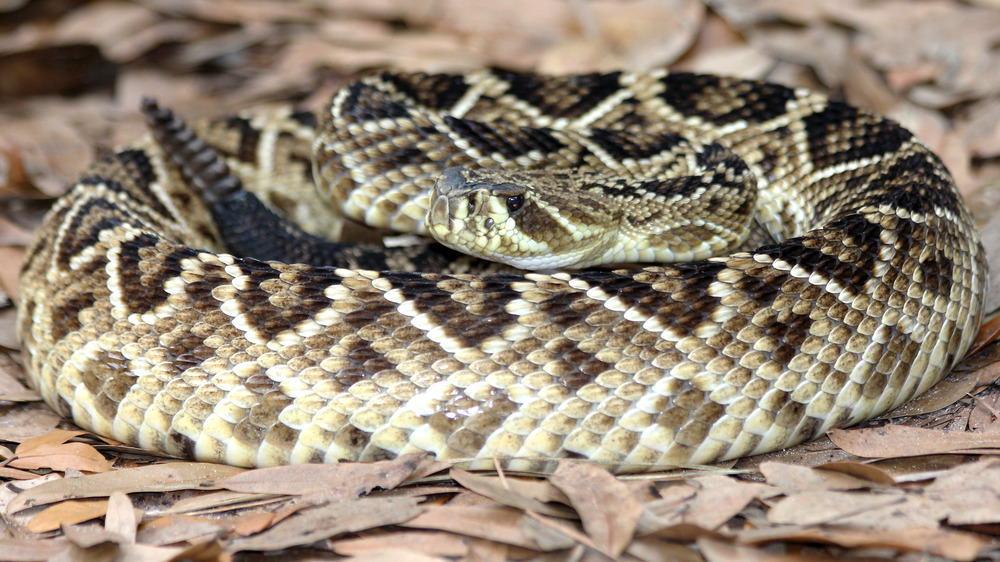This Might Be The Deadliest Snake In The U.S.
According to a 2016 article from the Australian edition of the HuffPost, 20 of the 25 most deadly snakes in the world can be found in Australia, far from the United States. Nevertheless, the U.S. has its share of dangerous scaley slitherers. Land.com provided an un-ranked list of the deadliest snakes in North America, noting that the eastern diamondback rattlesnake is not only the largest snake on the list, but also boasts the largest fangs of any rattlesnake in the world. They can use those fangs to deliver bites with "a very high venom yield" with "absolutely devastating potency."
Per National Geographic, these snakes can reach up to eight feet in length, weigh up to 10 pounds, and live up to 20 years. Eastern diamondback rattlesnakes are found from southern North Carolina to Florida and as far west as Louisiana; their habitats include flatlands, woodlands, and coastal scrub. Their diet consists of rats, mice, squirrels, and birds. They have their positive aspects as well; National Geographic calls them the "most strikingly adorned of all North American reptiles" thanks to their yellow and black diamond-patterned scales.
Very deadly, but very rare
Despite the fact that eastern diamondback rattlesnake bites are potentially fatal, these snakes are shy by nature and avoid human contact, usually only using their attack skills when threatened or taunted by a predator. Antivenin serums that counteract the snake's venom are widely available, so bites are rarely fatal to any humans unlucky enough to face the wrath of an angry eastern diamondback.
Generally speaking, fatal snake bites in the United States are very rare. Per the Centers for Disease Control and Prevention, venomous snakes bite between 7,000-8,000 people each year, and of those incidents, about five prove fatal.
There is cause for concern nevertheless. For 10-44 percent of people bitten by the rattlesnakes, disability and permanent injury, such as the loss of a finger, result. Worldwide, however, venomous snakes kill at least 80,000 people per year, as reported by DW. Most deaths occur in rural villages in sub-Saharan Africa, South Asia, and Southeast Asia, where it's difficult for patients to receive antivenin treatments and other medical care.

